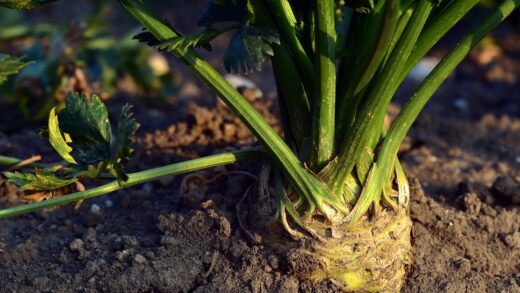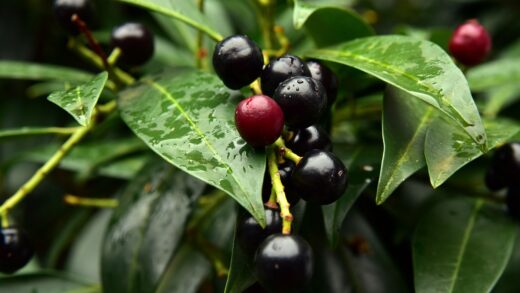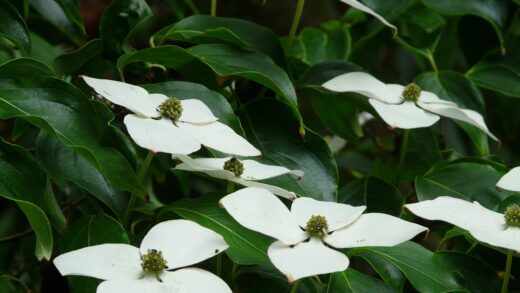Pruning is a vital horticultural practice that plays a multifaceted role in the health, productivity, and aesthetic shape of a lemon tree. It is a strategic process of selectively removing branches and foliage to achieve specific goals, such as improving air circulation, controlling size, removing damaged wood, and encouraging the growth of strong, fruit-bearing limbs. While the idea of cutting parts off a beloved tree can be intimidating for novice growers, understanding the fundamental principles and timing of pruning transforms it from a daunting task into an empowering tool for cultivating a more vigorous and fruitful plant. A well-pruned lemon tree is not only more manageable but also inherently healthier and more productive.
The primary objectives of pruning a lemon tree can be categorized into four main areas: structure, sanitation, size, and stimulation. Establishing a strong, open framework of branches when the tree is young is crucial for its long-term stability and ability to support the weight of a heavy fruit crop. Sanitation pruning involves the removal of any dead, damaged, or diseased wood, which improves the tree’s health by eliminating potential entry points for pathogens and pests. Pruning for size is particularly important for container-grown trees or those in smaller garden spaces, keeping the tree manageable and within its desired bounds. Finally, pruning can stimulate new growth, which is essential as lemons typically form on new wood.
The timing of pruning is a critical factor that significantly influences the tree’s response. The ideal time to perform major structural pruning on a lemon tree is in the late winter or early spring, just after the danger of frost has passed but before the tree begins its major flush of new growth. Pruning during this dormant period minimizes stress on the tree and directs the plant’s springtime energy surge into the desired branches. Light pruning and the removal of dead wood can be done at any time of the year, but heavy cutting during the peak growing season or late autumn should be avoided.
The tools used for pruning should be sharp, clean, and appropriate for the size of the branch being cut. For small twigs and branches, a pair of hand-held bypass pruners is sufficient. For larger branches, a lopper or a pruning saw will be necessary to make a clean cut without damaging the tree. It is essential to sterilize the blades of your tools with rubbing alcohol or a bleach solution before and after pruning, and especially between trees, to prevent the spread of diseases from one plant to another.
Why pruning is necessary
One of the most important reasons to prune a lemon tree is to create an open, well-ventilated structure. A dense canopy with crossing and crowded branches can trap humidity and reduce airflow through the center of the tree. This creates a microclimate that is highly conducive to the development and spread of fungal diseases, such as sooty mold and greasy spot. By selectively thinning out branches, you allow more air and sunlight to penetrate the canopy, which helps the leaves to dry quickly and creates a less hospitable environment for pathogens.
Pruning is also essential for maintaining the structural integrity of the tree. Left unpruned, a lemon tree can develop weak, V-shaped crotches where branches connect to the trunk at a narrow angle. These junctions are prone to splitting, especially under the weight of fruit or during strong winds. The goal of structural pruning, especially in a young tree, is to encourage the development of strong, U-shaped crotches with a wider angle, which provides a much more stable framework for the tree as it matures. It also involves removing branches that are growing straight up or straight down, which are typically less productive.
For many growers, especially those with limited space or container-grown trees, pruning is a practical necessity for size management. A lemon tree can grow quite large if left to its own devices, quickly outgrowing its pot or its designated spot in the garden. Regular pruning allows you to maintain the tree at a desired height and spread, making it easier to care for, harvest fruit from, and move indoors for the winter if necessary. This control over the tree’s size ensures that it remains a manageable and enjoyable part of your home or garden.
Finally, pruning directly influences the tree’s fruit production. Lemon trees produce fruit on new growth. Strategic pruning can stimulate the tree to produce more of this new, fruit-bearing wood. By removing non-productive growth, such as water sprouts (vigorous, upright shoots) and suckers (shoots that arise from the rootstock below the graft union), you redirect the tree’s energy into the branches that are most likely to produce flowers and fruit. This selective channeling of resources leads to a more efficient and productive tree.
The best time to prune
The timing of your pruning efforts can have a significant impact on the lemon tree’s health and fruiting cycle. The general consensus among horticulturalists is that the best time for major pruning is in the early spring. This timing allows the tree to heal from the pruning cuts just as it is entering its most vigorous growth phase. The surge of energy in the spring will fuel the rapid development of new shoots and leaves, helping the tree to recover quickly from the stress of pruning. Performing heavy pruning after the last frost also ensures that the fresh cuts are not exposed to damaging cold temperatures.
While early spring is ideal for structural pruning, light maintenance pruning can be performed throughout the growing season. This includes tasks such as snipping off small, wayward branches, removing any suckers that appear from the base of the trunk, or trimming water sprouts. Dead or damaged branches should be removed as soon as you notice them, regardless of the time of year. Prompt removal of this wood, a practice known as “deadwooding,” is a matter of plant sanitation and helps to prevent the entry and spread of diseases.
It is generally advisable to avoid heavy pruning in the late summer or early autumn. Pruning at this time can stimulate a flush of new growth that will not have sufficient time to harden off before the arrival of cold winter weather. This tender new growth is extremely susceptible to frost damage, which can set the tree back and cause unnecessary stress. It is better to let the tree slow its growth naturally and prepare for its winter dormancy.
Another period to avoid pruning is when the tree is in the process of heavy flowering or has just set a large crop of small, young fruit. Pruning at this stage can inadvertently remove the very branches that are about to become productive, thereby reducing your potential harvest. It is better to wait until after the main fruiting season is over or to time your pruning for the early spring before the major bloom period begins. This ensures that you are enhancing, rather than hindering, the tree’s productive cycle.
Pruning techniques for health and shape
When pruning a lemon tree, the goal is often to create a vase-like or open-center shape. This involves selecting three to five strong, well-spaced branches to serve as the main scaffold of the tree and removing the central leader (the main upward-growing stem). This open structure allows light and air to penetrate deeply into the tree’s canopy, which promotes even fruit ripening and significantly reduces the risk of fungal diseases. It also makes harvesting fruit from the interior of the tree much easier.
A key technique in maintaining the health of the tree is the removal of any branches that are rubbing against each other or crossing over. The friction from rubbing branches can create wounds in the bark, which serve as entry points for insects and diseases. When you see two branches competing for the same space, choose the one that has a better position and structure and remove the other one. This preventative measure helps to maintain the integrity of the tree’s bark, which is its primary defense against pathogens.
When making a pruning cut to remove a branch, it is important to cut back to a point of origin, such as a larger branch or the main trunk. Avoid leaving a stub, as these stubs will not heal properly and can become sites of decay or disease. The cut should be made just outside the branch collar, which is the slightly swollen ring of tissue at the base of the branch where it joins a larger limb. The branch collar contains specialized cells that will heal over the wound, so it is crucial not to damage it.
For container-grown trees, root pruning may also be a necessary part of the maintenance routine, typically performed every few years when the tree is being repotted. If the tree has become root-bound, with a dense mat of roots circling the inside of the pot, you can use a sharp, clean knife to trim off the outer inch or two of the root ball. This encourages the growth of new feeder roots and helps to keep the tree at a manageable size relative to its container. Root pruning should always be accompanied by a corresponding pruning of the top growth to reduce the demand on the newly trimmed root system.
Pruning for fruit production
Pruning plays a direct and significant role in enhancing the fruit production of a lemon tree. Since lemons are primarily produced on new growth, the main objective is to encourage the tree to produce a steady supply of new, healthy shoots. This is achieved by heading back some of the branches, which involves cutting a branch back to a bud. This type of cut stimulates the buds below it to break dormancy and grow into new shoots, which will then be capable of producing flowers and fruit.
A critical aspect of pruning for fruit production is the removal of non-productive growth that diverts energy from the fruiting wood. The two main culprits are suckers and water sprouts. Suckers are vigorous shoots that grow from the rootstock below the graft union on a grafted tree. These should be removed immediately as they will not produce the desired type of fruit and will sap energy from the scion (the upper, fruit-producing part of the tree). Water sprouts are fast-growing, vertical shoots that often appear on the main branches; they are typically unproductive and should also be removed.
Thinning out the canopy not only improves air circulation but can also lead to larger, higher-quality fruit. When a tree has an overly dense canopy, the fruit growing in the shaded interior may not ripen properly or may be smaller in size. By selectively removing some branches to allow more sunlight to reach all parts of the tree, you ensure that all the developing lemons have access to the light they need to grow to their full potential and develop a good flavor.
After a harvest, it can be beneficial to lightly prune the tips of the branches that have just finished fruiting. This can help to stimulate another flush of growth and potentially a second, smaller crop of lemons later in the season, as many lemon varieties can produce fruit year-round in the right conditions. This light, strategic pruning helps to keep the tree in a continuous cycle of renewal and production, ensuring a more consistent and bountiful supply of fresh lemons.
📷 Pixabay


















